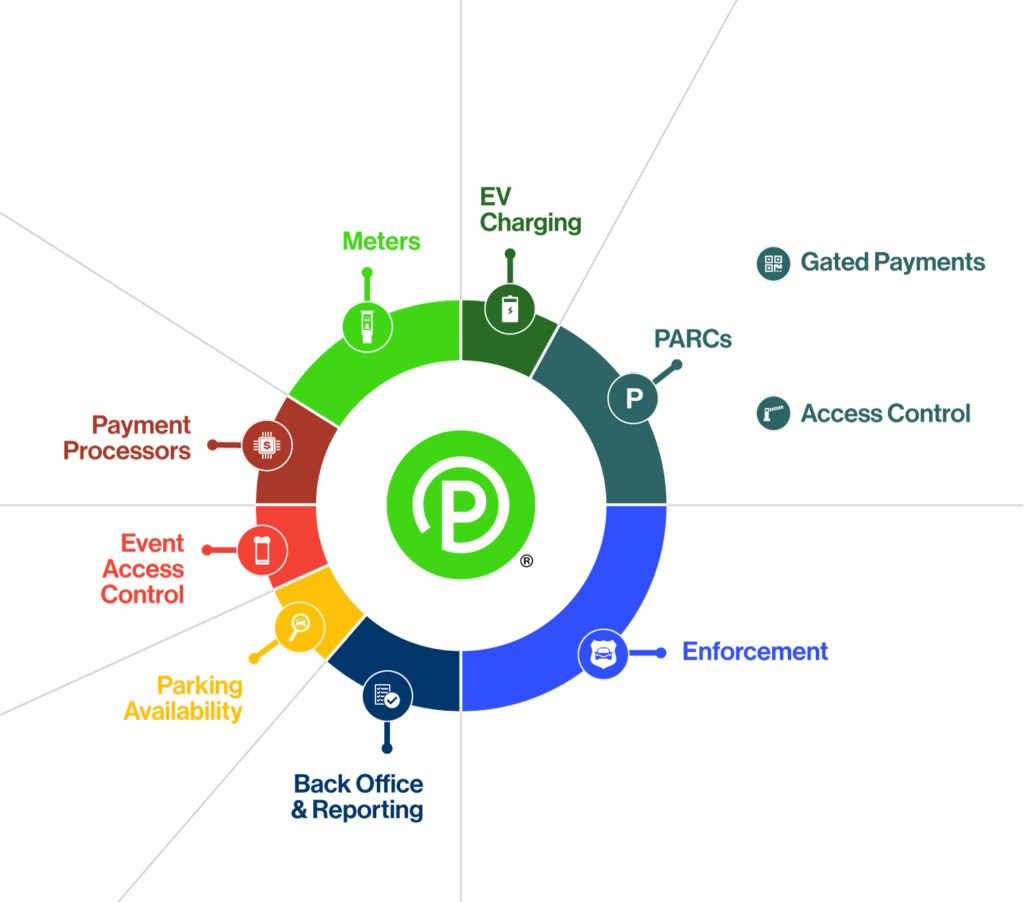When faced with the plethora of new options on the market, cities and operators are often torn between two different approaches: whether to choose a single all-in-one solution or multiple best-in-breed solutions.
All-in-One Solutions
With an all-in-one solution, you only have to manage one vendor (as they say, “one throat to choke”), and the hardware and software used in your operation is integrated from start to finish. While this might seem like the most attractive option, the reality is this: technology vendors are usually really good at one thing – not everything. The result is that certain pieces of the puzzle might be suboptimal.
For example, many manufacturers of parking payment kiosks offer their own mobile parking apps. However, most of these companies are not experts in mobile application development, and their apps are generally not widely adopted by consumers, which limits the success of their deployment.
What are the pros of an all-in-one approach?
- Easier Integrations. The overall integration of a system is easier when the solutions are from the same vendor. Additionally, with a common user interface throughout the suite of products, navigation becomes more straightforward.
- Longer Lifetime. When working with one vendor for an all-in-one solution, overall risk is reduced. Large vendors with large product suites are generally available longer-term, which reduces the risk of having to replace your entire system.
- Reduced Costs. All-in-one solutions usually come with lower costs due to that vendor’s ability to provide volume purchasing.
What are the cons?
- Limited Innovations. With an all-in-one solution, it can be challenging to meet your unique business requirements. Often, there are missing features and limited capabilities, and future innovations are stuck at the pace of the vendor selected.
- Slower Implementation. Overall, implementing a large suite of products – which you may not even use all of – can be much more complex. A slower implementation period results in delayed value to the business.

Best-in-Breed Solutions
Taking a best-in-breed approach means selecting the products that will best meet all of your business requirements. With this approach, you select the best solution in its category to perform a specialized function, such as mobile parking payment. By choosing a selection of best-in-breed solutions, you’re ensuring that the technologies you’re implementing truly meet the defined needs across every aspect of your operation.
However, once you’ve chosen the selection of technologies you want to implement, you have to make sure you have the resources and expertise to integrate these third-party systems, make all necessary investments in training, and successfully manage them all in a centralized location. If not, you will struggle to truly experience their value.
What are the pros of a best-in-breed approach?
- Better Innovations. Through a best-in-breed approach, you will meet all of your defined requirements, and you will likely discover more capabilities than what you were originally looking for due to the innovations of these solutions in their own niche categories.
- Faster Implementation. These solutions typically have a smaller scope and are therefore easier to implement. A shorter implementation period allows you to bring value to the business sooner. Additionally, through this smaller scope, you can more closely align the solutions as outlined by your business needs.
- Easier Updates. When a system’s function is geared toward one specific purpose, such as mobile parking payment, these solutions are easier to update, enabling you to respond quickly to any changes in the market. These system updates can also be rolled out without affecting other systems.
- Ability to Change: With a best-in-breed approach, you can switch out different parts of your technology, without interrupting your entire operation. For example, you might want to switch from single space to multi-space meters with a different hardware vendor. If you go with an all-in-one approach, this becomes challenging. While if you have best-in-breed, you’ll be able to swap out different pieces over time without interrupting your operation.
What are the cons?
- Integration Challenges. Best-in-breed solutions often fail to integrate and work well with other products, making the ability to share data across these systems extremely difficult. Additionally, if your business is seeking a common user interface across your entire system, this is difficult to acquire with a best-in-breed approach, where you will be navigating between disparate systems.
- Limited Lifetime. The vendors of these best-in-breed products are often smaller organizations, and their viability may be limited.
- A Need for Centralized Management. A system with multiple solutions will likely require a centralized management platform, which becomes an additional investment.
Key Questions to Guide Your Decision
Before purchasing and implementing new technology, whether all-in-one or best-in-breed, you need to ask the right questions:
- Do you have the resources on your team to manage the technology?
- How will that technology integrate with other technologies in your operation?
- Will the technology be intuitive to use so that your team will be able to use it effectively?
- How will you ensure that you are able to keep the technology up to date?
- How stable is the company that is selling the technology? Will they still be here in 12 months, or will they be out of business?
- Who else is using the product in the market?
- What kind of service and support does the company offer on an ongoing basis?
- What kind of data and reporting will you get?
- Is the solution customizable or is it “off the shelf”?
To learn more about ParkMobile’s solutions, request a demo.

 Get it on Google Play
Get it on Google Play